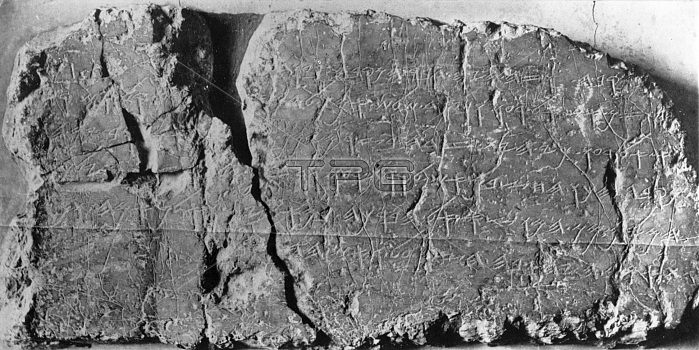
The Siloam Inscription The inscription was discovered in 1880 by a boy who was bathing in the waters of the Gihon Spring, and was studied by Conrad Schick, one of the first explorers of Jerusalem. Engraved in the rock, the inscription describes the meeting of the two groups of hewers who had begun digging from opposite ends of the tunnel. "The tunneling was completed... While the hewers wielded the ax, each man toward his fellow... there was heard a man's voice calling to his fellow... the hewers hacked each toward the other, ax against ax, and the water flowed from the spring to the pool, a distance of 1,200 cubits..." The inscription is now in the Istanbul Museum. Hezekiah's Tunnel "When Hezekiah saw that Sennacherib had come, intent on making war against Jerusalem, he consulted with his officers and warriors about stopping the flow of the springs outside the city, and they supported him. A large force was assembled to stop up all the springs and the wadi that flowed through the land, for otherwise, they thought, the king of Assyria would come and find water in abundance" (2 Chronicles 32:2-4). These events occurred in the year 701 BCE, when the Assyrian king laid siege to Jerusalem. The Gihon Spring, which was outside the city, confronted King Hezekiah with a double dilemma: to ensure water for the besieged city, yet to deny the source of the water to the Assyrian forces. The Bible describes Hezekiah's solution: "It was Hezekiah who stopped up the spring of water of Upper Gihon, leading it downward west of the City of David "(2 Chronicles 32:30). The waters of the Gihon were diverted into the Gai wadi by means of a tunnel 533 meters (581 yards) long, which was hewed from both ends simultaneously, probably along the course of a natural cleft in the rock. An inscription in the rock at the end of the tunnel describes the completion of the project.
| px | px | dpi | = | cm | x | cm | = | MB |
Details
Creative#:
TOP18426604
Source:
達志影像
Authorization Type:
RM
Release Information:
須由TPG 完整授權
Model Release:
No
Property Release:
No
Right to Privacy:
No
Same folder images:

 Loading
Loading